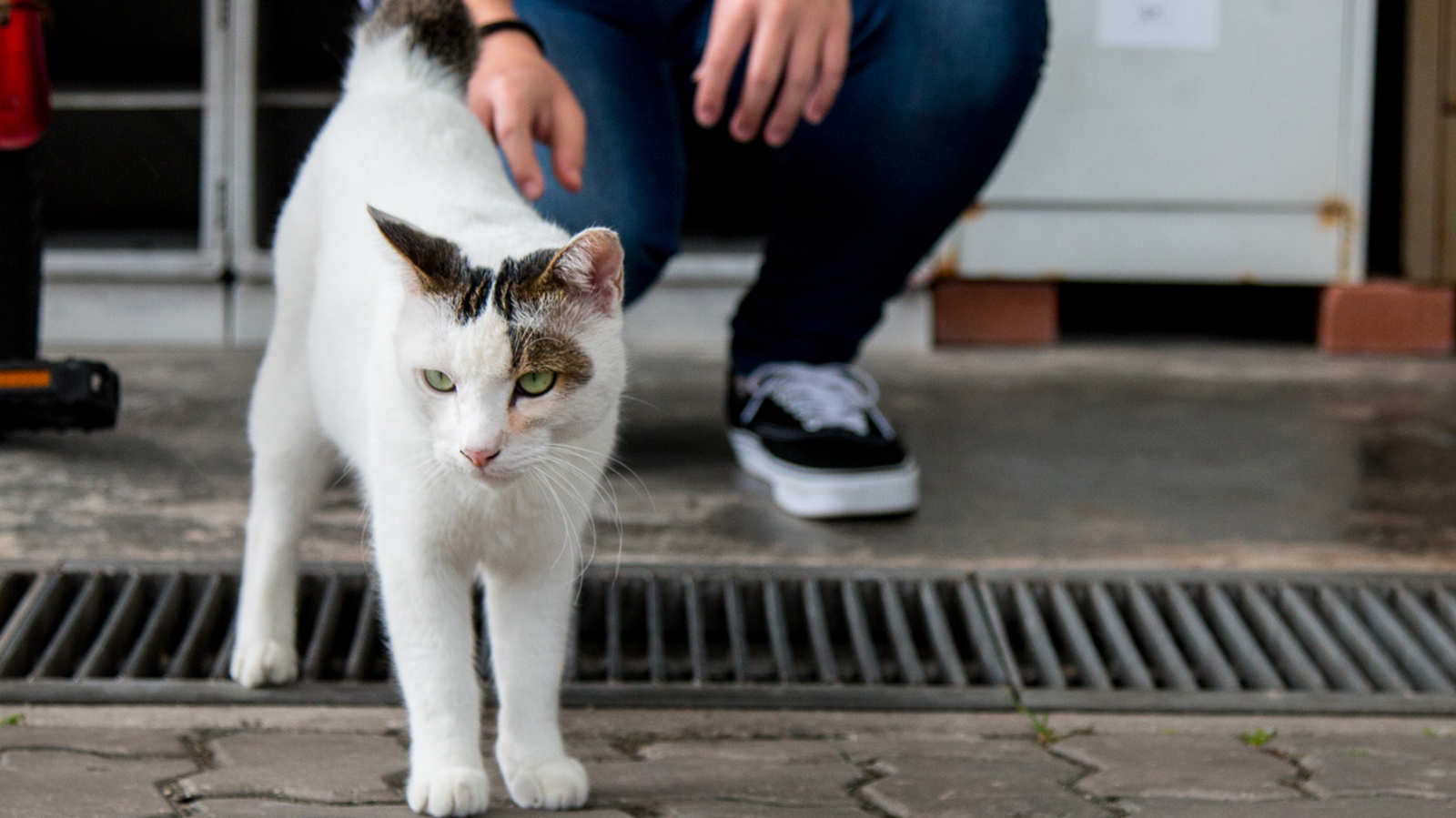For more than four decades now, Madam Loh Kwee Chin, 65, has been feeding the stray cats in her neighbourhood at Bedok North Ave 1.
Known as Auntie Pauline in the neighbourhood as well as to those working at the Town Council, she started feeding the cats in 1975. It started when she was followed by cats when she was returning home one day after buying food.
Referring to them affectionately as community cats, Auntie Pauline said her passion for these furry creatures developed while she was growing up in a kampong at Lorong Tai Seng, where cats roamed freely.
“It’s my hobby because I love animals. My heart has one feeling. No matter how I feel, when I see them, I feel so happy. Without them, aiyah… I feel part of me is missing,” said Auntie Pauline in the little English she knows.
Other stories you might like
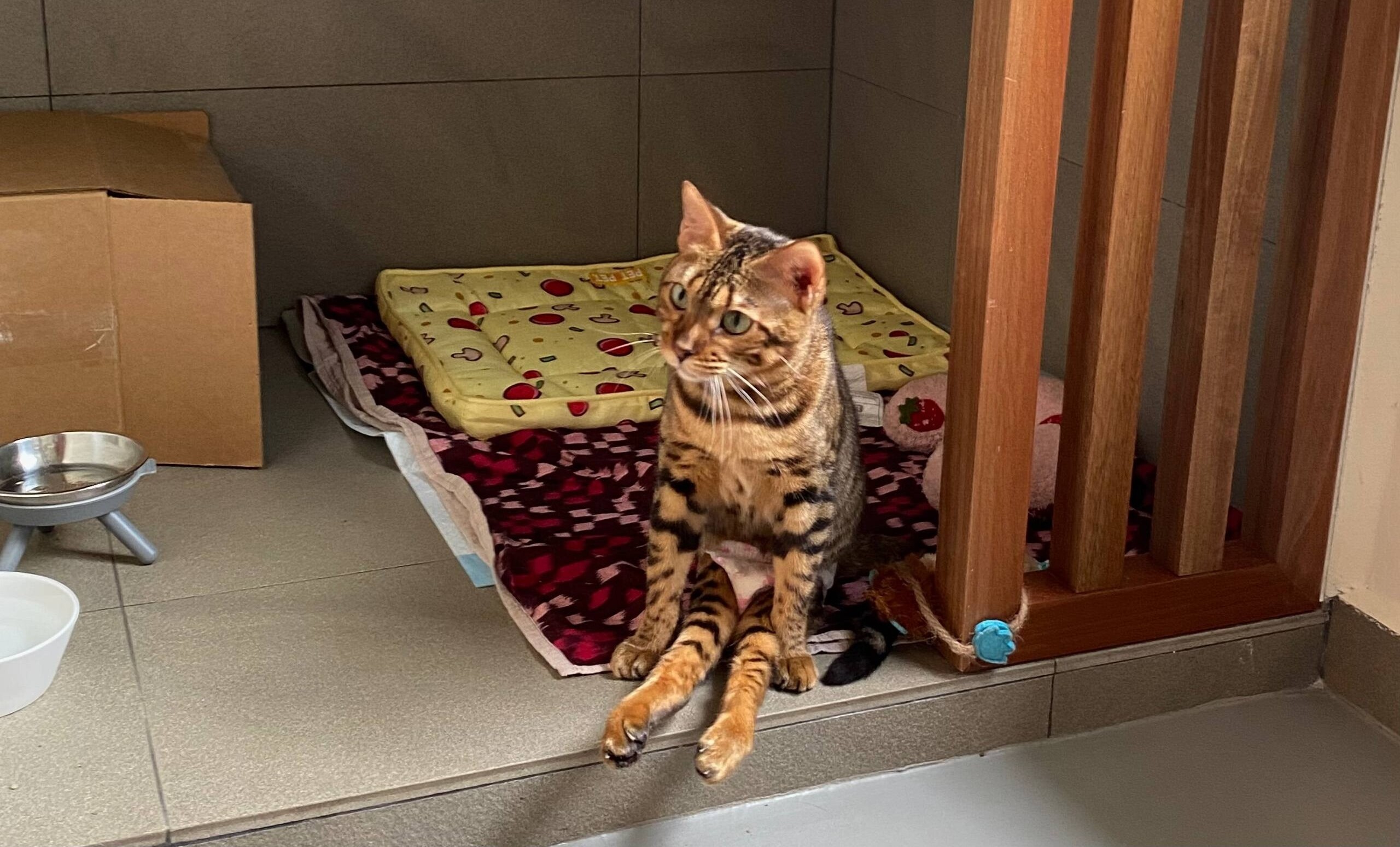
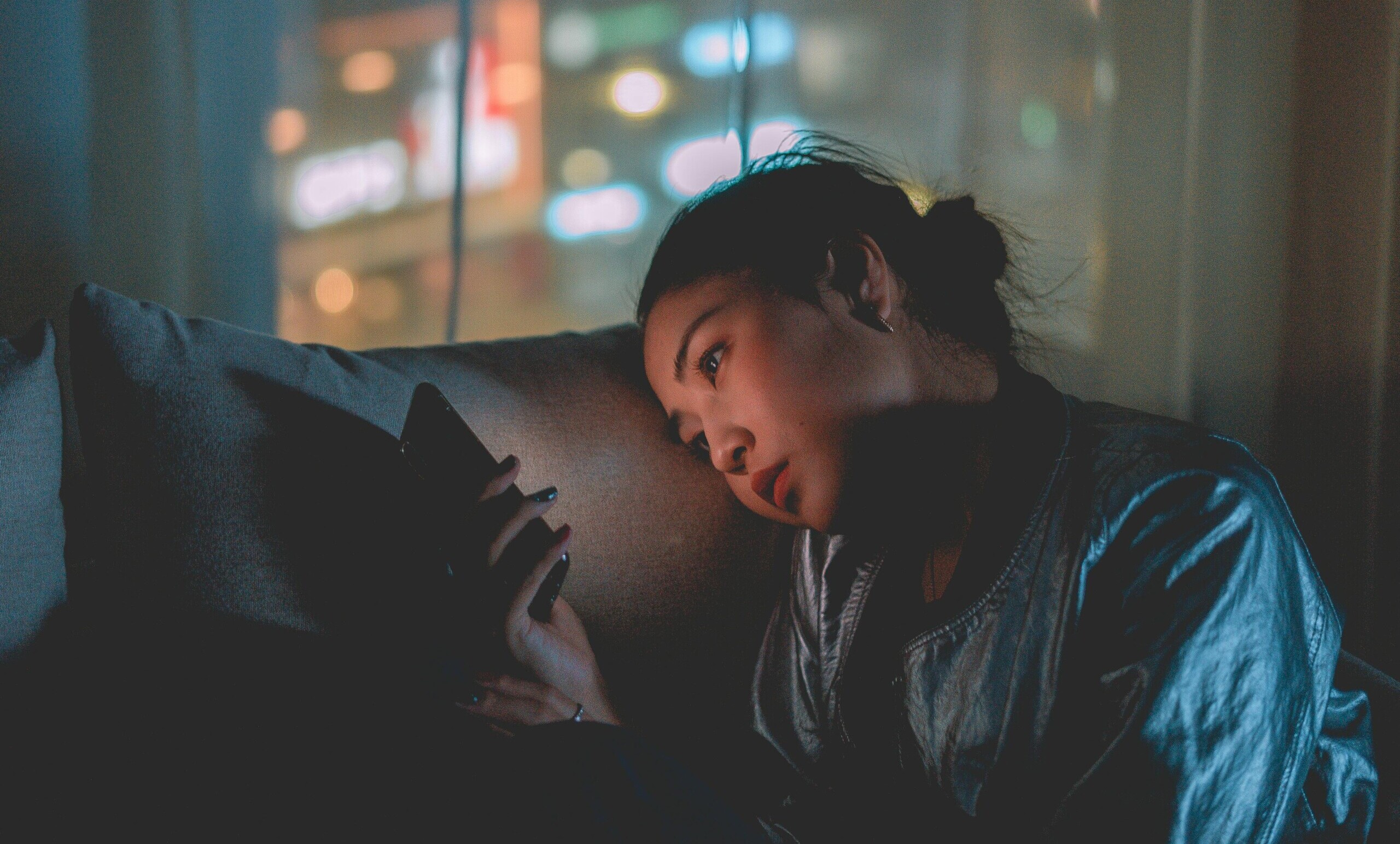
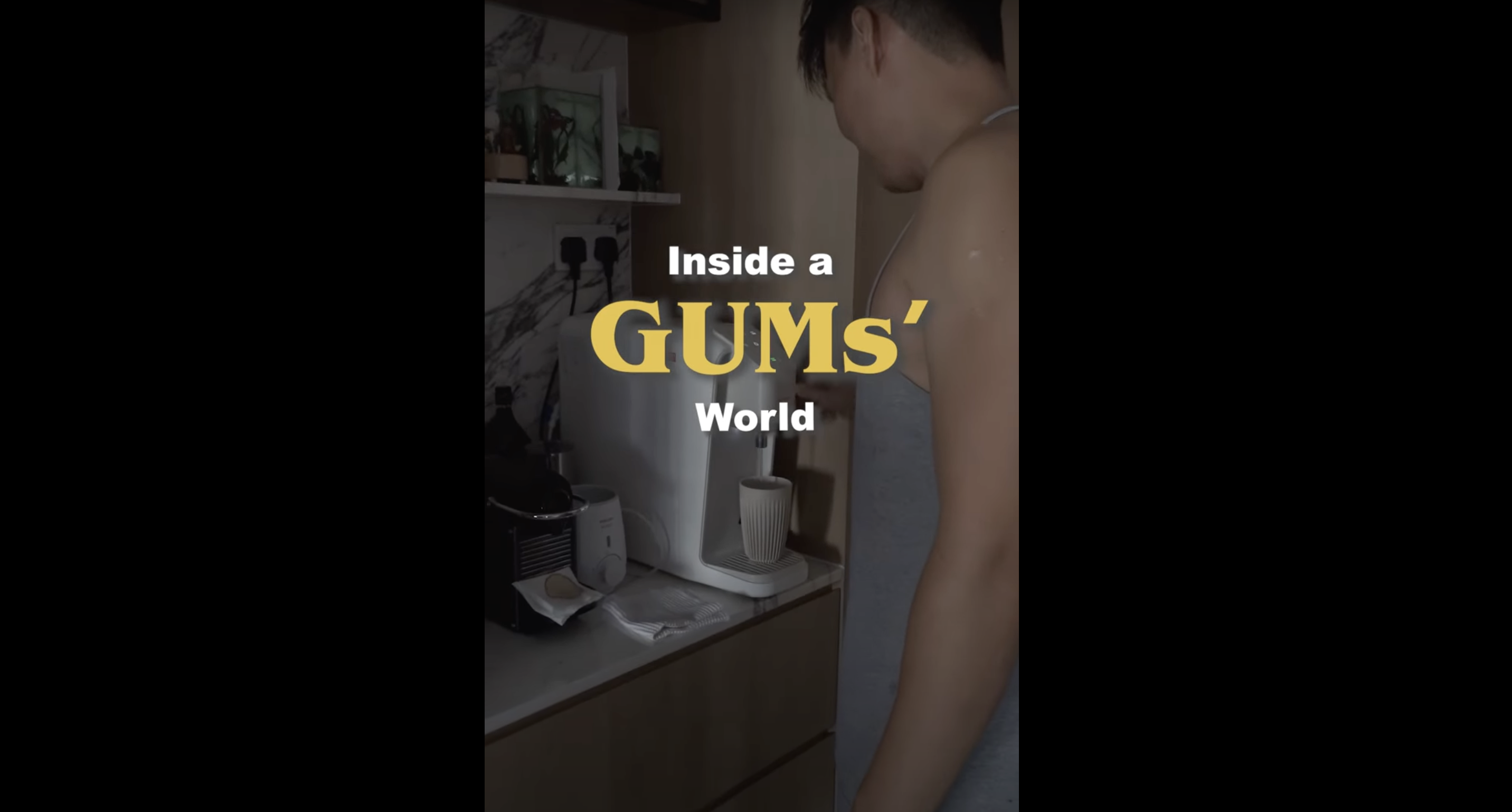
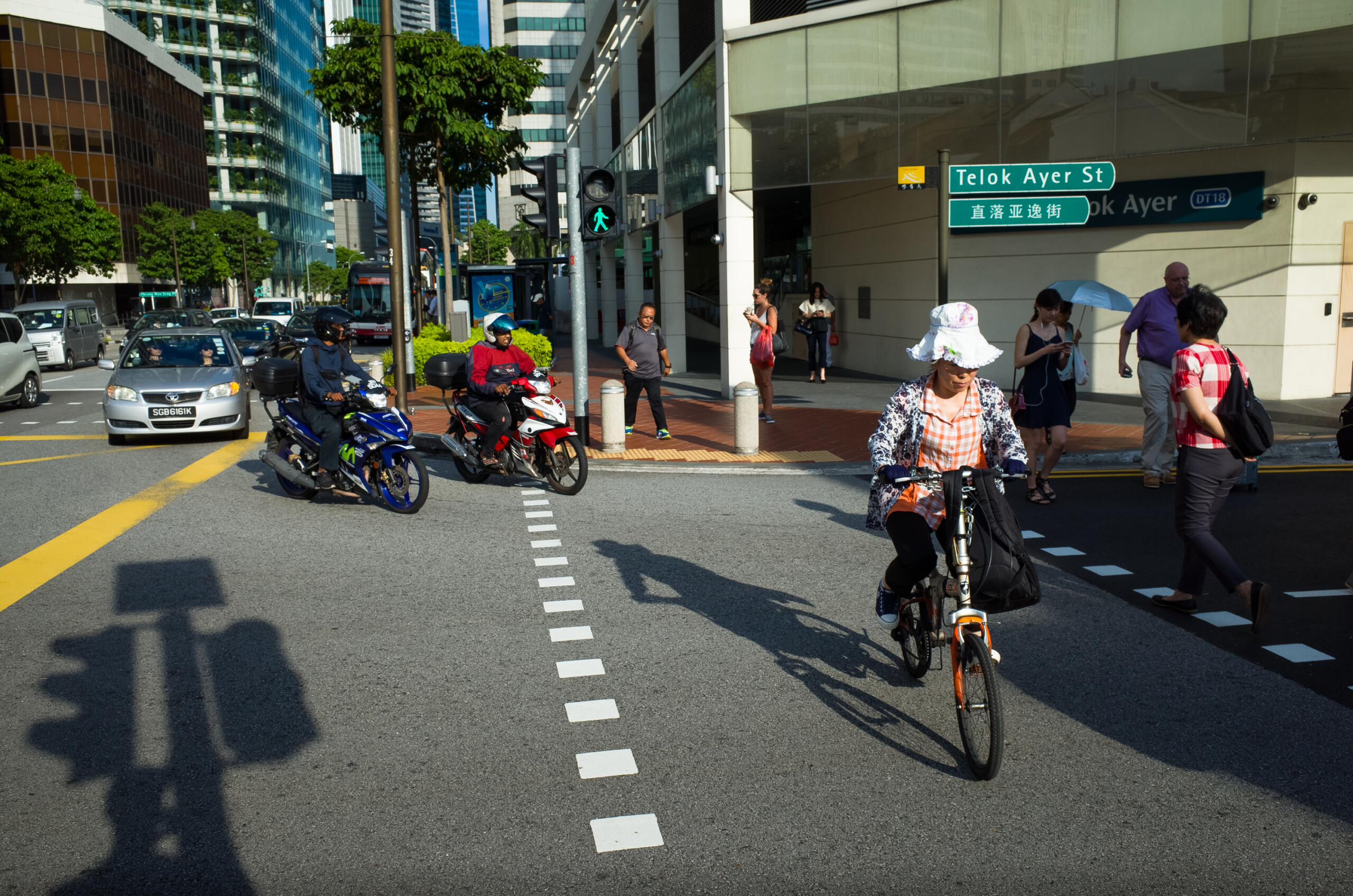

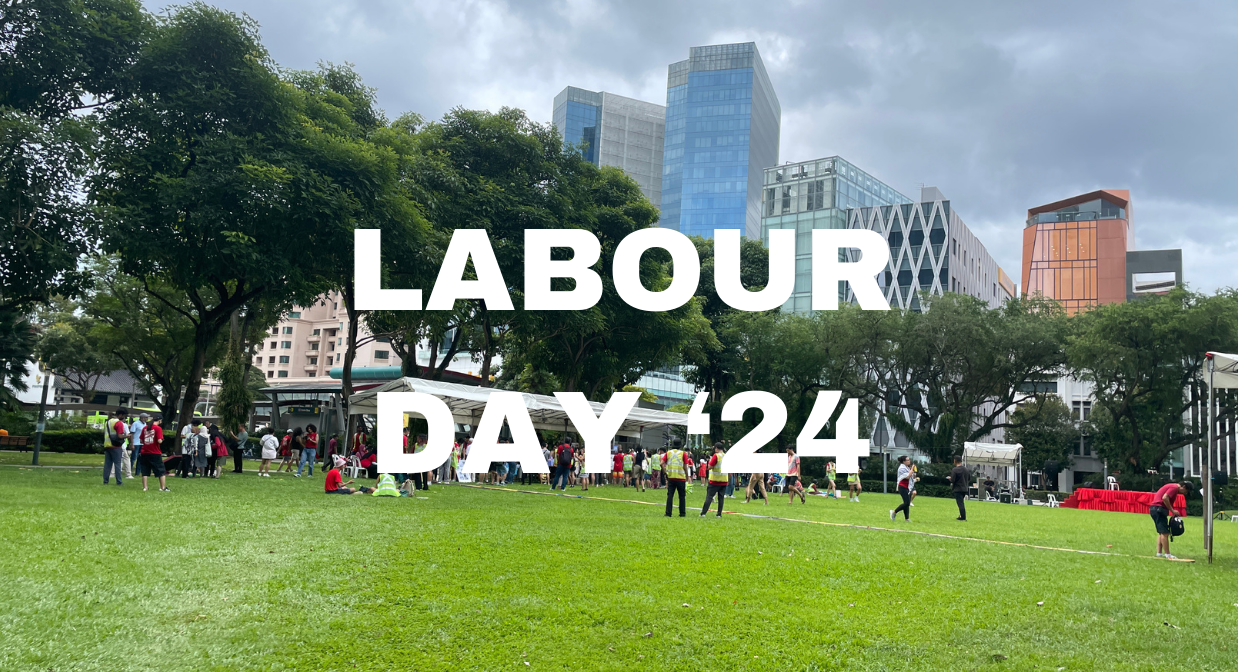
Auntie Pauline takes care of 15 cats in total, which, according to her, have all been sterilised. During her feeding runs, she would push a trolley to their usual eating spots, place the cat food on brown food wrappers and replace the water that was left there from the night before. She uses brown food wrappers placed on top of newspapers as she fears that newspaper ink will poison her cats.
She would talk to them, coaxing them to eat and finish their food. The cats are scattered over Blocks 515 to 520 and 553 of Bedok North Ave 1 and it takes her more than two hours to feed all the cats and clean up the leftovers.
“I put the food in one corner for the cats to eat. Cannot disturb people who are passing by. Even when raining, they are very smart one. They go to a dry corner and wait for me,” said Auntie Pauline.
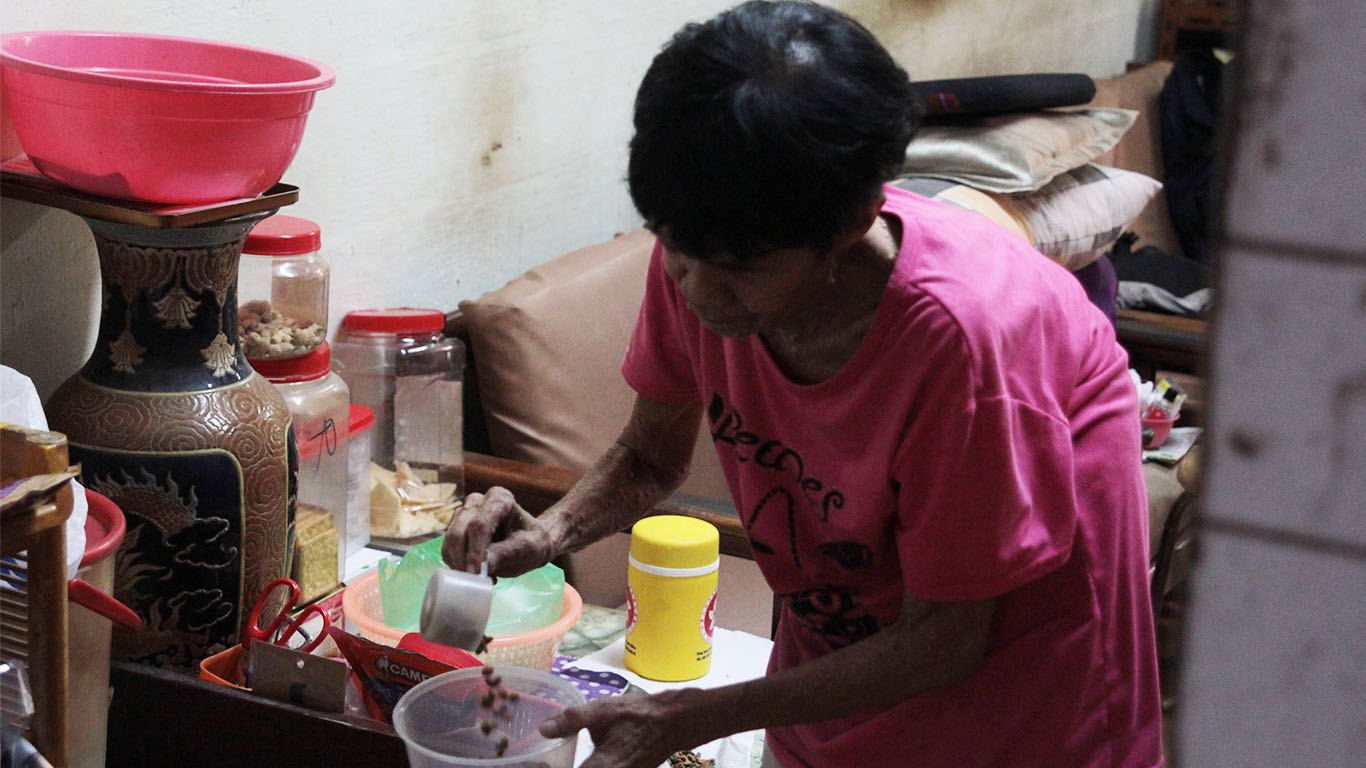
Auntie Pauline feeds them religiously every night, Mondays to Sundays. She starts between 8.30pm and 9.30pm because there are fewer people out during that time. She also takes time to clean them with a wet towel when they are dirty or dries them when they are caught in the rain. She even uses eye cream to clean out the dirt from their eyes.
She pays for everything that the cats need from her own pocket. Even when the cats are sick, she takes them to the Mount Pleasant Veterinary Centre. The centre gives her a 20 per cent discount on the cats’ medical bills because she is a regular.
Related article: Why do we still abuse animals in Singapore?
Mahatma Gandhi once said: “The greatness of a nation and its moral progress can be judged by the way its animals are treated.” Auntie Pauline also makes sure her cats are given medical treatment when required: She took one of her cats to a pet hospital where it was admitted for two weeks. The pet hospital charged her a nominal fee of just $100. On another occasion – in 1985 – she sent a cat which had broken its legs to the hospital where it stayed for three years. The hospital charged her a nominal, undisclosed fee.
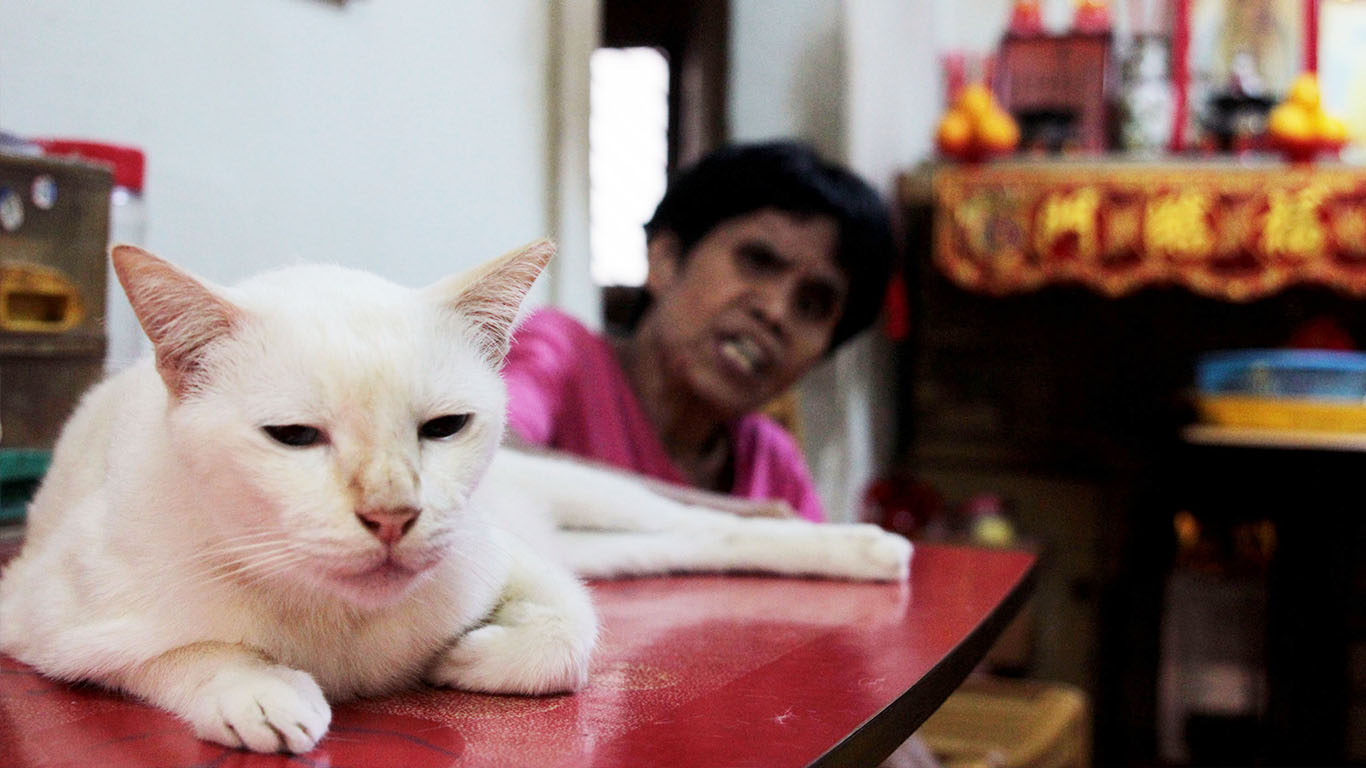
Unfortunately for Auntie Pauline, she broke her hip in a fall in 2009 and had to stop working. Her eldest brother wanted her to stop feeding the cats, but Auntie Pauline reassured him that she would be fine to do so. But she does occasionally get help from her neighbours.
“On days I not feeling well, they buy the canned food, feed the cats and change the water for me, lah. I feel happy but paiseh, ah,” she said. “But I don’t want people to help me. I will try to do myself, lah. I will try my best to do it.”
Her eldest brother gives her a monthly allowance, part of which goes to buying cat food every two weeks. She did not want to disclose how much she spent on the cats but chooses instead to consider the good it will do for them.
Related article: Why can’t we have cats in HDB flats?
While the authorities may remove cats which are a nuisance to residents, Auntie Pauline wishes this won’t happen to any of her cats.
“They are my children. I feed them long time already. If someone takes away your children, how do you feel?” said Auntie Pauline, who works closely with the Cat Welfare Society (CWS), an organisation that ensures stray cats are sterilised and culled humanely.
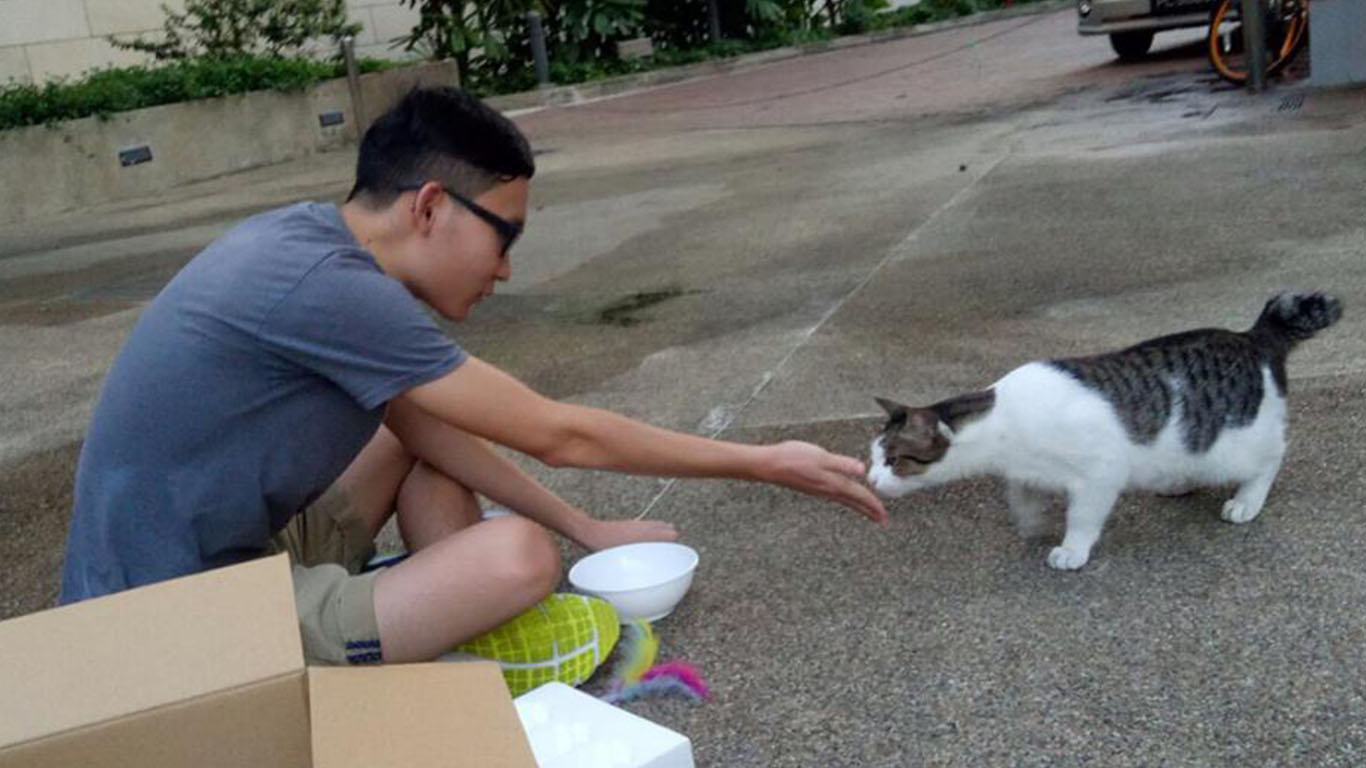
Cat feeders are not confined to housing neighbourhoods: they operate in Singapore’s universities, too. At the National University of Singapore, Mr Gan Hui Kang, also known as Bob, is project director for NUS CatCafe, a student-run club which serves 11 community cats. Bob, 23, said that despite the club’s name, it is not a cat cafe with tea and coffee. He feeds the cats every Tuesday, together with another volunteer.
“Usually, we will spend around $150 on dry cat food per semester,” he said. He relies on fundraising events and public donations to fund this.
Related article: Blind man couldn’t get into lift because of guide dog
At the National Technological University, Miss Cheryl Tan, 21, is president of another student-run club, the NTU Cat Management Network. Like Bob, she conducts fundraising activities. Twice every academic year, the club sells merchandise during campus events. The funds are used to pay for cat food and veterinary bills. Last October, her club had to send a new cat for a general check-up, which costs less than $50. On average it sends at least four cats to visit the vet every six months.
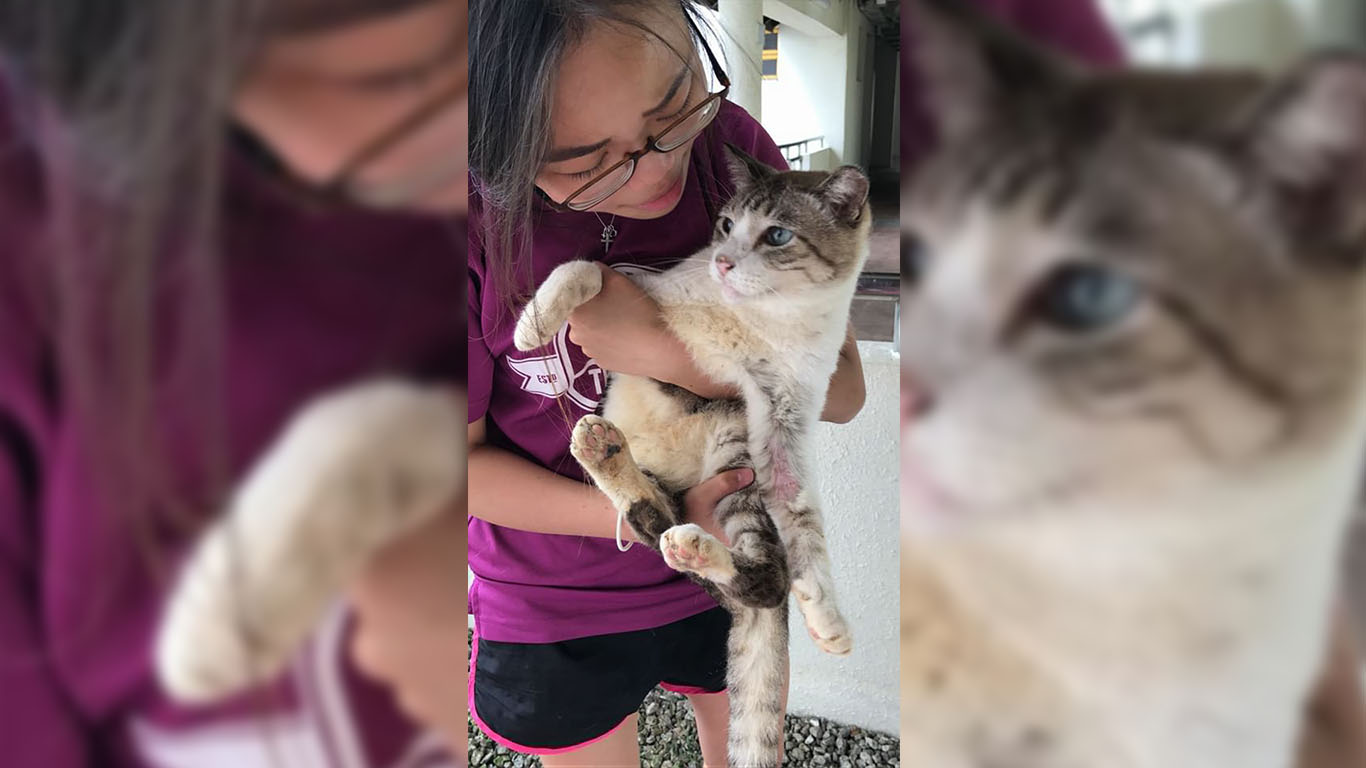
She said; “Usually we take our cats to Vet for Pets because it’s near to the university. It’s more convenient for us. They would charge us strays-rates. This rate is much cheaper. We don’t conduct regular check-ups for these cats because we have limited funds. Instead, we will only send the cats for treatment when it is really necessary.”
Meanwhile, Ms Angelene Tan, who has been a cat feeder for as long as she can remember – she started about 30 years ago when a few stray cats approached her and followed her home – considers herself a caregiver to cats.
“It was only the last four years that I started feeding them regularly, every night,” she said. “Apart from filling their tummies, I do check on their overall health, giving them basic first-aid when needed, spending a bit of time for some kitties that want nothing more than a bit of love and fussing, or affection. There were a few cases where the cats needed a vet’s attention. So trips to the vets are also part of caregiving,” she explained.
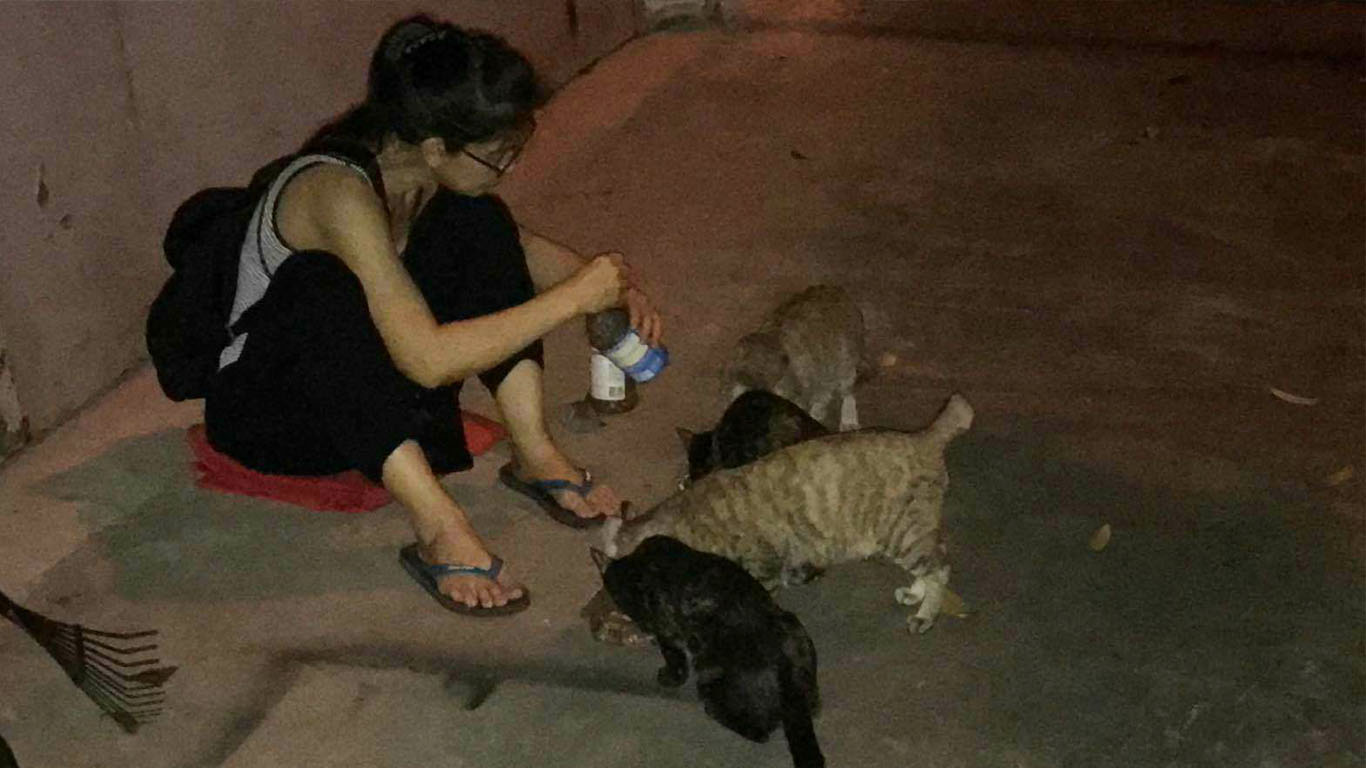
She finds these cats in what she describes as “their respective territories” – blocks of flats, void decks and industrial estates in the eastern part of Singapore.
She did not want to specify the amount she spends on the cats, saying: “Any amount spent has never been given a second thought nor has it ever been calculated.”
The self-employed cat caregiver, who has her own pet cats – all rescues – disclosed that she has seen cats being abused, mainly by children who, she said, are not taught to show kindness and respect to animals.
“Part of our caregiving includes educating individuals who have been seen by us being unkind to the cats,” she said. There are also unseen acts: People who would trample on the water bowls that are left for the cats, especially on warm weather days.
Related article: See how young volunteers bring happiness to mental patients
“A few of us caregivers do work with the estate cleaners, making sure the water bowls left by us are not disposed of and that water is freshly changed on a daily basis,” she said.
For Angelene, who is naturally drawn to animals because she grew up with pets, her hope is that one day, everyone in Singapore will be kind to all living things. A hope that’s probably shared by Auntie Pauline, Bob, Cheryl, and an army of cat feeders operating in various parts of the island.
“I envision our nation to be truly a gracious one for all, to be all inclusive and accepting unconditionally for all living beings. It may not be in the immediate future. But it will happen. There are more kind-hearted souls out there than not,” she said.
To learn more about how you can support community feeders, visit the Cat Welfare Society’s page.
